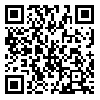BibTeX | RIS | EndNote | Medlars | ProCite | Reference Manager | RefWorks
Send citation to:
URL: http://yafte.lums.ac.ir/article-1-1847-en.html
Background: Sleepiness that occurs at inappropriate or undesirable times or that interferes with daytime activities is generally considered excessive daytime sleepiness. Obstructive Sleep Apnea (OSA) is one of the most common causes of excessive daytime sleepiness. The aim of this study is to finds out the most important nocturnal polysomnographic parameters influencing daytime sleepiness in patients with OSA. Materials and Methods: Considering the inclusion and exclusion criteria, 112 patients referred to Baqiyatallah subspeciality sleep clinic in Qom city were selected. Patients, demographic and Epworth Sleepiness Scale (ESS) data were gathered and then comparison among ESS with polysomnography and anthropometric parameter was performed. Chi-square was used for analysis of qualitative parameters. Data analysis was done by SPSS v.18. P value was significant (˂0.05). Results: The mean age of the cases was 55.07 with male frequency 58.9% and female 41.1%. Body mass index was 34.34, apnea hypopnea index 43.62, mean Arousal Index 30.64 and mean ESS was 12.83. There was significant relationship among ESS>10 with arousal index (p=0.009) and mean O2 saturation (p=0.029), But we didn’t detected correlation between ESS>10 with other polysomnographic parameters. Conclusion: According to the data, the most important parameters of sleepiness in obstructive sleep apnea patients were sleep fragmentation and mean O2 saturation.
Received: 2015/05/3 | Accepted: 2015/05/3 | Published: 2015/05/3
| Rights and permissions | |
 |
This work is licensed under a Creative Commons Attribution-NonCommercial 4.0 International License. |





